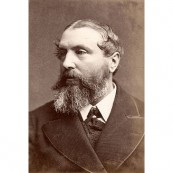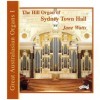| Country: | England |
| Period: | Romantique, Neoclassicism |
Biography
William Thomas Best (August 13, 1826 – May 10, 1897) was an English organist.
The son of a solicitor, he was born at Carlisle. Having decided on a musical career, he became a pupil of the cathedral organist. He became particularly skilled in the interpretation of Bach's music. His successive appointments were to Pembroke chapel, Liverpool, 1840; to a church for the blind, 1847, and the Liverpool Philharmonic Society, 1848. For a short time (1854–1855) he was in London at the Royal Panopticon in Leicester Square, the church of St Martin-in-the-Fields, and Lincoln's Inn chapel.
In 1855 he returned to Liverpool as organist of St George's Hall, where his performances rapidly became famous throughout England. Ill-health compelled him at last to retire in 1894. He was engaged as solo organist at all the Handel festivals at the Crystal Palace, and also as organist at the Royal Albert Hall, where he inaugurated the great organ in 1871. He had been in the receipt of a civil list pension of £100 a year since 1880, and in 1890 went to Australia to give organ recitals in the town hall of Sydney. Best died in Liverpool.
His command over all the resources of his own instrument was masterly; his series of Saturday recitals at St George's Hall, carried on for many years, included the whole field of organ music, and of music that could be arranged for the organ, ancient and modern; and his performances of Bach's organ works were particularly fine. His own compositions for the organ, notably Organ Pieces for Church Use, have a strong and marked individuality. Unlike many soloists, he was an all-round musician. His bust, by Conrad Dressler, was placed on the platform in front of the Liverpool organ, as a memorial of his long series of performances there.
William Thomas Best was a free-mason.








![Great European Organs. 56-John Scott Whiteley [Sheffield City Hall]](http://static.classicalm.com/repository/collection-cover/small/951-img1342361735689340.jpg)